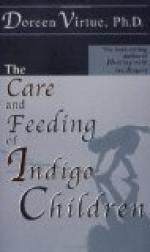How do we know that this is so?
By the fact that in good breast milk the amount of sugar is greater than that of the fat, proteids, and salts combined.
We have seen that cow’s milk has nearly three times as much proteids (curd) and salts as mother’s milk. How are these to be diminished?
By diluting the milk.
Will it be sufficient to dilute the milk twice (i.e., add two parts of water to one part of milk)?
Not for a very young infant. Although this will give about the quantity of proteids present in mother’s milk, the proteids of cow’s milk are so much more difficult for the infant to digest, that in the beginning it should be diluted five or six times for most infants.
If cow’s milk is properly diluted and lime-water and sugar added does it then resemble mother’s milk?
No; the mixture contains too little fat.
What is the easiest way of overcoming this?
By increasing the fat in the milk before dilution. It may be done by using top-milk or a mixture of milk and cream.
What is top-milk?
It is the upper layer of milk removed after standing a certain number of hours in a milk bottle, glass jar, or any tall vessel with straight sides. It contains most of the cream and some of the milk just below.
The strength of the top-milk is measured by the fat it contains—e.g., a 10-per-cent milk contains 10 per cent fat; 7-per-cent milk contains 7 per cent fat, etc. These are the two strengths of top milk most used in infant feeding.
On what does the percentage of fat in top-milk depend?
1. On the length of time the milk has stood.
2. On the manner in which the top-milk is removed.
3. On the number of ounces removed.
4. On the richness of the milk used.
Unless these are known it is impossible to say even approximately how strong in fat the top-milk is.
When and how should top-milk be removed?
If milk fresh from the cow, or before the cream has risen, is put into bottles and rapidly cooled, the top-milk may be removed in as short a time as four hours. In the case of bottled milk it makes little difference if it stands a longer time, even until the next day. The best means of removing it is by a small cream-dipper[2] holding one ounce; although it may be taken off by a spoon or siphon. It should not be poured off.
[2] Obtained from any of the
Walker-Gordon milk laboratories,
from James Dougherty, No.
411 West 59th Street, New York, and
from many druggists.
Price, 20 cents.
How can we obtain a 10-per-cent top-milk with the different kinds of cow’s milk?
From a rather poor milk (containing 3—3-1/2 per cent fat) by removing the upper eight ounces from a quart, or one fourth.
From a good average milk (containing 4 per cent fat) by removing the upper eleven ounces from a quart, or about one third.




